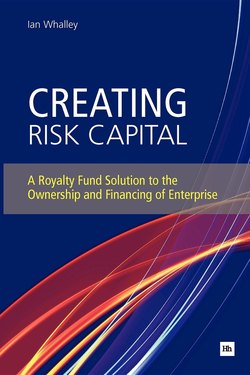Читать книгу Creating Risk Capital - Ian Whalley - Страница 12
На сайте Литреса книга снята с продажи.
ОглавлениеA current perspective
It is hard to exaggerate the vital importance of private enterprises. They provide all manner of goods and services for citizens and consumers. They generate employment and public revenues through the taxes they pay. They create the wealth which allows for education, health, provision for old age, defence, entertainment, leisure and much more besides. In short, they play a critical role in society and the economy, and in the prosperity and well-being of citizens. Whether they are business firms, major companies, or diverse enterprises such as mutual, co-operative or non-profit organisations, they affect the quality of life every day, everywhere.
These enterprises owe their existence to the rich infrastructure of industrial, commercial, financial and legal systems, which has been developed and honed over centuries to meet the ever-changing needs and problems of society, business and government. Rarely are the needs and problems of today entirely new: the merchants and bankers of Augsburg, Lombardy, Florence and Venice, like the Fuggers and the Medicis, will have met many of them in their day. Nor are most of the innovations entirely new, however much trumpeted as such: present and future generations will surely build on existing systems for solutions to the challenges and problems that emerge.
And problems do emerge. Constantly. For example, raising capital for small and medium-size enterprises seems to present chronic problems in terms of both supply and demand. At the other end of the scale, widespread dissatisfaction with standards of behaviour and competence in some major companies, where managers have exploited their position for their personal gain and prestige, has led to disenchantment with the dominant public company model.
Moreover, this model seems ill-suited to many enterprises, like banks and utilities, which provide what are traditionally regarded as public services: here there is a question of legitimacy, when the need to make profit as a major quoted company may be perceived as taking precedence over the public interest. Nor does the model work for the very large number of enterprises which want or need to retain their independence, such as private firms, non-profit and employee-owned enterprise. We will be looking at how these sorts of enterprises can raise risk capital without losing their distinctive character.
The financial crisis of 2007-2009
Endemic problems like the ones cited above came into sharp relief in the financial crisis of 2007-2009, when extremely serious banking failures threatened whole national economies and the international financial system. Among the very damaging consequences of this crisis, capital and credit became unobtainable for many small and medium-size firms and the diverse independent enterprises which complement them; the inadequacy of regulation and corporate governance norms with regard to abuses and failures at major companies and core financial institutions was starkly revealed; and the provision of public services, including those delivered through private enterprise, came under acute pressure amid severe austerity measures.
The steps taken to resolve the crisis, frantic as they often were, involved large-scale state intervention to restore confidence and stability in financial institutions, even bringing some of them into public ownership. The outcome remains uncertain, as unsettled financial and economic conditions continue to cause much hardship in 2011. Meanwhile, the crisis provides a salutary reminder that whatever systems, models and regulations are adopted, and however rigorously they are applied, none of them are foolproof or perfect, and they will all ultimately depend on the integrity and trust which sustain all social and business dealings.
